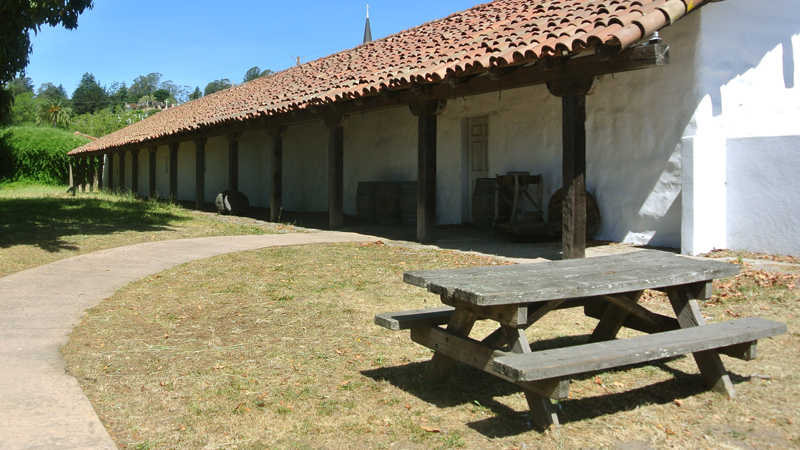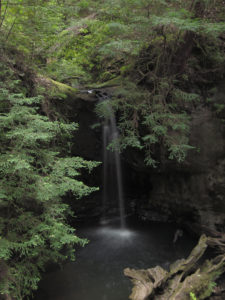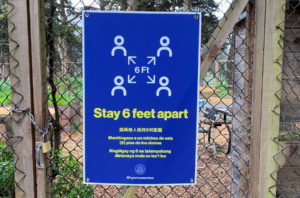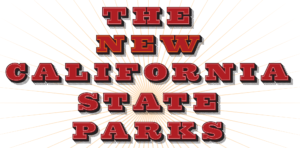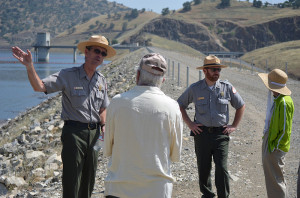Dances and dinners and movies and art shows — these aren’t the first activities that come to mind when one thinks about California State Parks.
But under the strain of the parks department’s budget crisis, nonprofits like Friends of Santa Cruz State Parks have gotten more creative in the ways they market and raise money for the natural spaces they support.
Standing on a bluff at Santa Cruz Mission State Historic Park, the Friend’s executive director Bonny Hawley recalled a recent CD release party and parks fundraiser her group threw on the Mission grounds for local electro-pop band Audiafauna.
“It was great,” she laughed. “We had about 200 people here dancing and listening to music with this amazing view of downtown. You’d be surprised by how many people who live nearby had never even been here before.”
Past events at the Mission similar to this one – a mole and Mariachi festival, outdoor movie screenings, a photography show – have not only helped the group raise money but have also brought in new visitors who didn’t previously have the parks on their radar, Hawley said.
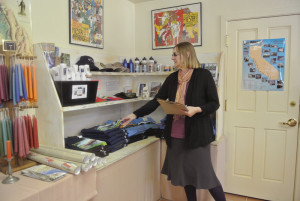
The nonprofit, which has been around since 1976 and supports more than 20 state parks in Santa Cruz and San Mateo counties, is hoping to draw further public attention and funds this summer with a ukulele performance and flower design competition, among other events.
In May 2011, California State Parks announced the planned closure of 70 state parks – including the Santa Cruz Mission – to save money. An outpouring of public support to keep the parks open resulted in a funding reprieve through July 2014, as well as agreements with nonprofits and other entities to take over operation in lieu of the state.
These groups have been scrambling to keep the public’s interest, increase visitor numbers and raise money for the parks ever since.
Victor Roth, a district service manager for the California Department of Parks and Recreation, said the concerts, dinners and cultural events held by Friends of Santa Cruz represent a successful example of the state working with its partners.
“And those partners are doing things that state parks haven’t done,” Roth said. “We don’t organize concerts in the park. But as long as we can bring in more money with activities that are consistent with our mission – even long time parks employees like myself embrace that notion.”
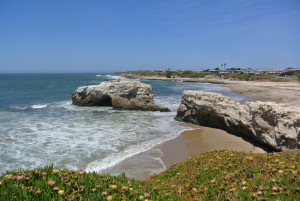
Mountain Parks Foundation, the sister organization to Friends of Santa Cruz, also has creative fundraisers underway to support Big Basin and Henry Cowell Redwoods State Parks. Last year a volunteer for Big Basin wrote and performed the play “Tales of the Magic Redwood Forest” in the park. The proceeds for the play funded new signage at Big Basin.
Mountain Parks Foundation, a Santa Cruz area nonprofit, isn’t the only one bringing drama to the parks.
Up north, the Parks Alliance for Sonoma County and Valley of the Moon Natural History Association is working with the Transcendence Theatre Company to offer evening outdoor theater performances to the public at Jack London State Historic Park. This effort raised $25,000 for the park last summer and brought in a new crowd of people at a different time of day – increasing the park’s popularity, according to the Parks Alliance.
The Sonoma County parks advocates are also marketing their state parks by placing postcards at popular wineries and distributing information at local events like parades.
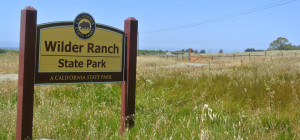
Merchandizing is good way to draw attention and funding, Hawley said. In the Santa Cruz Mission’s gift shop she pointed out magnets, prints and apparel depicting images that look like paintings of the parks, but were actually created from photographs. Friends of Santa Cruz, which just recently began selling these pieces, offers them online and at five of its park stores. The proceeds go directly to the parks.
Alden Olmsted, a filmmaker and state parks advocate known for his $1-in-the-bucket fundraising efforts, said Friends of Santa Cruz is a great example of a group successfully working to save the financially-strapped areas.
“They’re drawing a healthy balance between a state organization and a local nonprofit, and are showing others how they can be effective,” he said.
While her organization is happy to do the work it has done, Hawley said, it is still hoping to see the state provide more support in the future for the parks out of its General Fund.
“I’d like to see groups like ours be additive more than the means of survival,” she said.
Dhyana Levey is a Bay Nature contributor and writer for our online series about the State Parks funding crisis.

